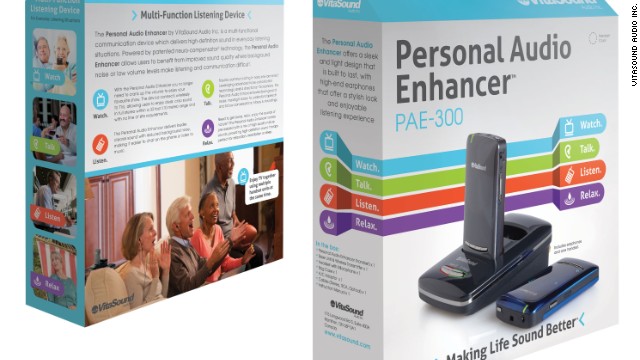Socioeconomic Status Found to Be a Major Factor in Whether Deaf Children with Cochlear Implants Communicate Primarily Through Speech | Newswise – Newswise

Report on Socioeconomic Disparities in Cochlear Implant Outcomes and Implications for Sustainable Development Goals
Executive Summary
A recent study published in Laryngoscope reveals that socioeconomic status (SES) is a primary determinant of spoken language acquisition in young deaf children with cochlear implants. This report analyzes these findings through the lens of the United Nations Sustainable Development Goals (SDGs), highlighting significant challenges to achieving SDG 3 (Good Health and Well-being), SDG 4 (Quality Education), and particularly SDG 10 (Reduced Inequalities). The research indicates that while medical technology is available, socioeconomic barriers prevent its full benefit, creating profound disparities in developmental outcomes.
Key Research Findings
The study, led by Dr. Nancy M. Young at Ann & Robert H. Lurie Children’s Hospital of Chicago, examined outcomes for 176 children who received cochlear implants before their third birthday. The principal findings include:
- A stark disparity in communication outcomes based on SES, as indicated by insurance type. 85 percent of children with commercial insurance developed spoken language as their primary mode of communication.
- In contrast, only 33 percent of children eligible for Medicaid achieved the same outcome.
- The family’s primary language (e.g., English-only, Spanish-only, or bilingual) was found not to be a significant factor influencing the development of spoken language.
- This suggests that bilingualism should not be considered a negative influence on language development for children with cochlear implants, supporting inclusive approaches.
Analysis of Disparities in Relation to SDG 10: Reduced Inequalities
The study’s results provide critical evidence of systemic failures in achieving SDG 10, which aims to reduce inequality within and among countries. The vast gap in outcomes between children from higher and lower socioeconomic backgrounds demonstrates a profound inequality in the ability to access the full benefits of a life-changing health intervention. This disparity is not due to the technology itself but to the socioeconomic environment in which the child develops, pointing to a need for systemic solutions that address the root causes of this inequality.
Impact on SDG 3 (Good Health and Well-being) and SDG 4 (Quality Education)
The findings have direct implications for other fundamental SDGs:
- SDG 3: Good Health and Well-being: While cochlear implants represent a major advance in healthcare, the study shows that their provision alone is insufficient to ensure well-being. The subsequent lack of language development in children from low-SES families constitutes a significant health and developmental inequity, undermining the goal of ensuring healthy lives for all, especially for children with disabilities.
- SDG 4: Quality Education: Language is the foundation of learning. A failure to develop primary communication skills creates a severe impediment to accessing quality education. Children who do not develop spoken language are at a high risk of falling behind academically, which perpetuates a cycle of disadvantage and works directly against the goal of inclusive and equitable quality education and lifelong learning opportunities for all.
Recommendations and Future Research for Achieving SDGs
To address these disparities and advance the SDGs, the report underscores the need for targeted action and further research.
- Develop Targeted Interventions: To advance SDG 10, interventions must move beyond the medical procedure to address the socioeconomic factors that hinder progress. This includes providing enhanced, culturally competent support systems for low-SES families.
- Implement Parent Coaching: There is a critical need to invest in programs that coach parents from lower socioeconomic backgrounds in effective, interactive communication strategies. Such programs directly support early childhood development, a key target of SDG 4.
- Research Accessible Support Models: Further research is required to determine how to best mentor families and whether virtual delivery of these coaching strategies can be effective. This is essential for creating scalable and accessible solutions that bridge the inequality gap, aligning with the principles of SDG 3 and SDG 10.
1. Which SDGs are addressed or connected to the issues highlighted in the article?
SDG 3: Good Health and Well-being
- The article focuses on a medical intervention, cochlear implants, for young deaf children. This directly relates to ensuring healthy lives and promoting well-being for all at all ages, particularly for individuals with disabilities. The study examines the outcomes of this health intervention.
SDG 4: Quality Education
- The article’s central theme is the development of spoken language, which is a fundamental prerequisite for literacy, learning, and formal education. The disparity in language outcomes directly impacts a child’s readiness for and ability to succeed in the education system. The research addresses early childhood development, a key component of this goal.
SDG 10: Reduced Inequalities
- This is the most prominent SDG in the article. The research explicitly highlights a significant disparity in outcomes based on socioeconomic status (SES). The findings show that children from lower SES families (Medicaid-eligible) have substantially different outcomes than those from higher SES families (commercially insured), pointing to a clear inequality within a country.
2. What specific targets under those SDGs can be identified based on the article’s content?
SDG 3: Good Health and Well-being
- Target 3.8: Achieve universal health coverage, including financial risk protection, access to quality essential health-care services and access to safe, effective, quality and affordable essential medicines and vaccines for all.
Explanation: The article highlights a disparity in outcomes between commercially insured children and Medicaid-eligible children. While both groups have access to the cochlear implant procedure, the difference in spoken language acquisition suggests a gap in the *quality* and *effectiveness* of the overall care continuum (including post-operative therapy and parental support), which is a crucial aspect of universal health coverage.
SDG 4: Quality Education
- Target 4.2: By 2030, ensure that all girls and boys have access to quality early childhood development, care and pre-primary education so that they are ready for primary education.
Explanation: The study focuses on infants and young children (implanted before their third birthday) and their language development. This is a critical component of early childhood development. The article’s call for “targeted coaching of parents on interactive… communication strategies” is a direct recommendation for improving early childhood development outcomes. - Target 4.5: By 2030, eliminate gender disparities in education and ensure equal access to all levels of education and vocational training for the vulnerable, including persons with disabilities, indigenous peoples and children in vulnerable situations.
Explanation: The article deals with a vulnerable population: young children with a disability (deafness). The identified disparity based on socioeconomic status represents a barrier to ensuring equal access to the foundational skills needed for education for this vulnerable group.
SDG 10: Reduced Inequalities
- Target 10.2: By 2030, empower and promote the social, economic and political inclusion of all, irrespective of age, sex, disability, race, ethnicity, origin, religion or economic or other status.
Explanation: The article’s core finding is that “socioeconomic status… is a very important influence on spoken language after implantation.” This directly addresses inequality based on “economic or other status” and its impact on the social inclusion of children with disabilities. - Target 10.3: Ensure equal opportunity and reduce inequalities of outcome, including by eliminating discriminatory laws, policies and practices and promoting appropriate legislation, policies and action in this regard.
Explanation: The study reveals a stark inequality of outcome: “85 percent of commercially insured children with cochlear implants compared to 33 percent of Medicaid-eligible children” primarily use spoken language. The call for more research on how to “improve language outcomes in children from low socioeconomic backgrounds” is a call to action to reduce this inequality of outcome.
3. Are there any indicators mentioned or implied in the article that can be used to measure progress towards the identified targets?
Indicators for SDG 3 & 10
- Indicator: The proportion of children with cochlear implants who primarily use spoken language, disaggregated by socioeconomic status or insurance type.
Explanation: The article provides precise data for this indicator: “communication primarily using spoken language occurred in 85 percent of commercially insured children with cochlear implants compared to 33 percent of Medicaid-eligible children.” Tracking this gap over time would measure progress towards reducing inequalities of outcome (Target 10.3) and achieving more equitable results from health services (Target 3.8).
Indicators for SDG 4
- Indicator: The rate of spoken language acquisition as the primary communication mode in young deaf children with cochlear implants.
Explanation: This is the main outcome measure of the study and serves as a direct proxy for successful early childhood development (Target 4.2) for this specific population. Improving this rate, especially for the lower SES group, would indicate progress. - Indicator: The impact of family language (e.g., bilingualism) on spoken language outcomes for children with cochlear implants.
Explanation: The article mentions that “family language was not a significant contributor to the primary use of speech.” This finding is an important indicator for ensuring inclusive educational development strategies (Target 4.5), as it suggests that bilingualism should not be viewed as a barrier.
4. Table of SDGs, Targets, and Indicators
| SDGs | Targets | Indicators |
|---|---|---|
| SDG 3: Good Health and Well-being | 3.8: Achieve universal health coverage, including access to quality essential health-care services. | Disparity in communication mode outcomes for children with cochlear implants based on health insurance coverage type (commercial vs. Medicaid). |
| SDG 4: Quality Education | 4.2: Ensure access to quality early childhood development.
4.5: Ensure equal access to all levels of education for the vulnerable, including persons with disabilities. |
Rate of spoken language acquisition as the primary communication mode in young deaf children with cochlear implants.
Impact of family language (e.g., bilingualism) on language outcomes. |
| SDG 10: Reduced Inequalities | 10.2: Promote social and economic inclusion of all, irrespective of economic or other status.
10.3: Ensure equal opportunity and reduce inequalities of outcome. |
The proportion of children with cochlear implants who primarily use spoken language, disaggregated by socioeconomic status (85% for commercially insured vs. 33% for Medicaid-eligible). |
Source: newswise.com

What is Your Reaction?
 Like
0
Like
0
 Dislike
0
Dislike
0
 Love
0
Love
0
 Funny
0
Funny
0
 Angry
0
Angry
0
 Sad
0
Sad
0
 Wow
0
Wow
0



























;Resize=805#)


















































